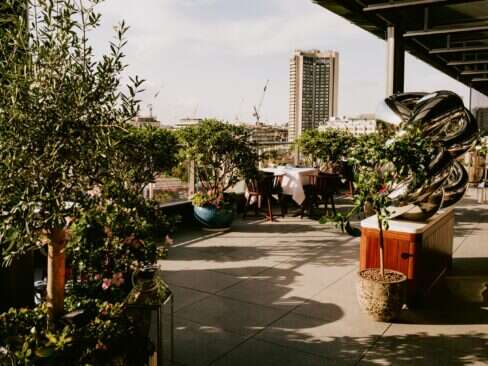There are many things that draw us back to the magnetic Spain: The festivals and year-round festivities; its vibrant cities and sparkling beaches; the millennia of history embedded in every corner. From urban weekends in Barcelona and Madrid to summer vacations across Ibiza and Mallorca to even just road-tripping across the magical terrain, it’s no wonder the country attracts over 100 million international visitors a year.
With good weather year-round, tourists can pretty much plan a visit to Spain throughout the calendar year, whether that’s exploring the Balearic Islands away from the summer bustle or strolling through the cities in the quieter months of winter. But for those in the know, there’s no better time to plan your next vacation than when it collides with one of the country’s thrilling traditional festivals.
A combination of religious jubilation, centuries-old local tradition, and regional celebrations that honor Spanish heritage, the Spanish sure know how to party. A Spanish festival is an unforgettable experience, and wholly unique to the country’s passionate culture. Here are the best traditional festivals in Spain.
Concurs de Castells
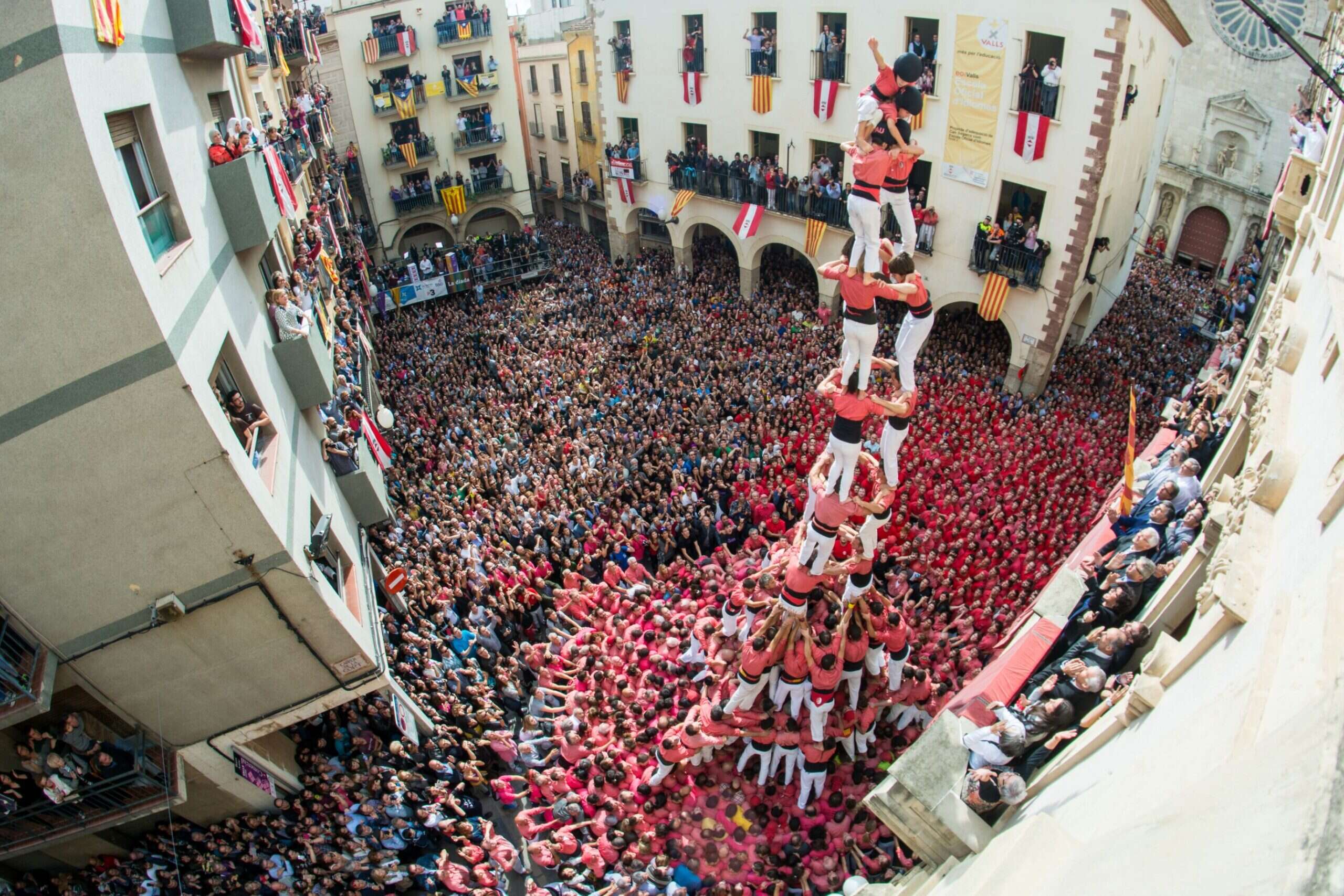
Bring fond childhood memories of summer camps spent assembling human pyramids back to life with Catalonia’s Concurs de Castells festival. Yes, really. Taking place every second year in early October, join the thousands that flock to Tarragona to watch this particularly gigantic human towers competition.
Reaching up to 40 ft in height, teams from across Catalonia compete to create the best human pyramid, in which the judging quantifies the structure’s height and complexity, and often a child will be placed atop.
Perhaps silly sounding in concept at first, sure. But dismiss it at your own loss; the festival is all sorts of fun, with origins that date back to the 15th century, and even a declaration of Cultural and Intangible Heritage of Humanity by UNESCO. Expect dancing, live music, street performances and fireworks at this celebration of Catalonian culture.
[See also: A Guide to Madrid’s Greatest Museums and Galleries]
Running of the Bulls
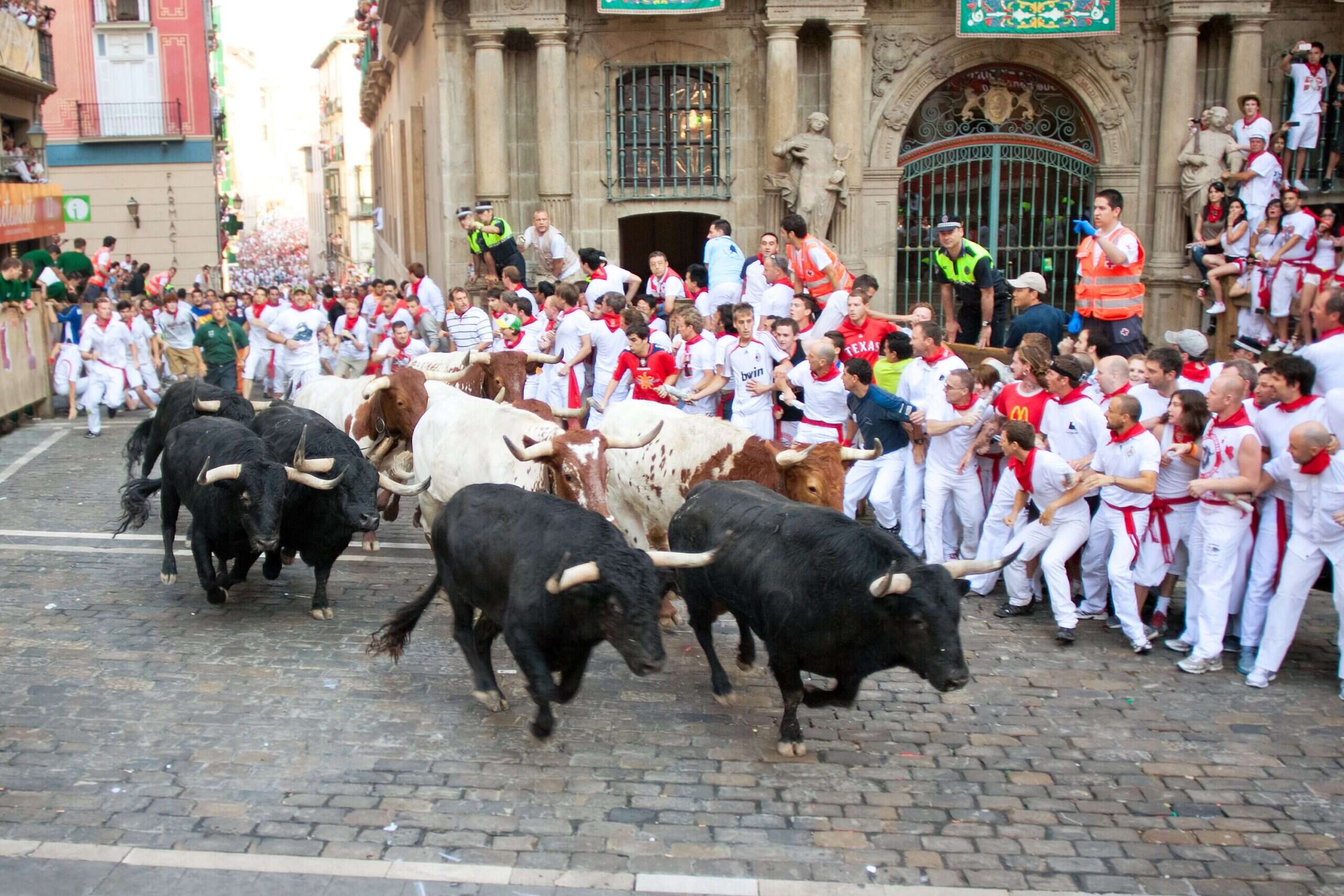
Taking place every year from July 7 through 14, the Running of the Bulls festival in Pamplona is one of the most famous traditional festivals of Spain. Every year, the northern Spanish city – the capital of Navarre – welcomes guests that flock from across the globe to take part in the antics, much of which is Spain at its best; rich in culture, true fiesta fashion, and open to all.
The festival starts when the church of San Cernin’s clock strikes eight in the morning, with six fighting bulls released onto the streets. Six oxen follow suit, herding the bulls in and keeping them on track, and those over the age of 18 are allowed to join in with the running. Although do be careful; since 1910, 16 participants have died in the festival.
Despite the run of the bulls itself lasting around four minutes, the festivities continue on into the night, with copious music, dancing, and celebrations across the city, with attendees clad in the colors of white and red. But book early; over a million people apply for tickets a year, and be sure to source a hotel with access to the fiesta.
[See also: An Ernest Hemingway Guide to Spain]
Flour Fight Festival of Ibi
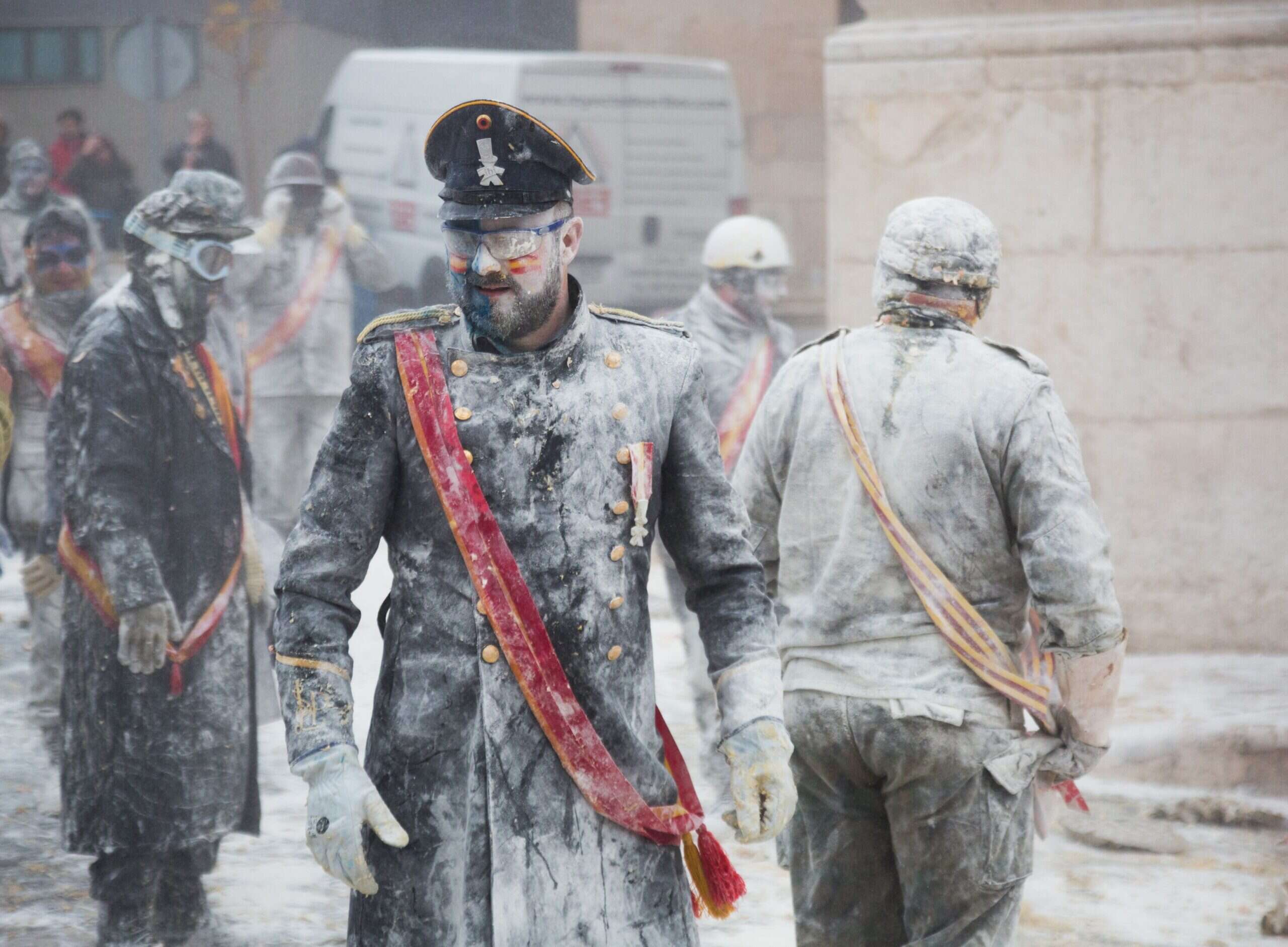
If the cold, dreary days of December don’t fill you with a desire to be covered in flour, think again: one of what is arguably the most unusual festivals in the world takes place upon the streets of Alicante every year on December 28, and is undoubtedly the best use of eggs and flour for the month since a Christmas dinner yule log three days earlier.
Els Enfarinats, as it’s called in Spanish, is a 200-year-old festival that is a Spanish version of April Fool’s Day. A group of men dress up in mock military uniform, act out a fake coup d’état, and wonderful madness ensues. The participants declare crazy rules upon the town, collect fines from those that break them – which are all donated to charity at the end – and the day, of course, concludes with a major egg and flour fight that feels akin to a high school senior muck up day.
With firecrackers released to conclude the day, it is a wonderful celebration of history, religion – the festivities take place on the Day of Innocence, which commemorates the New Testament story of King Herold ordering the deaths of innocent babies – and, above all, community.
[See also: Top Adrenaline-Inducing Adventures in Spain]
Valencia Fallas
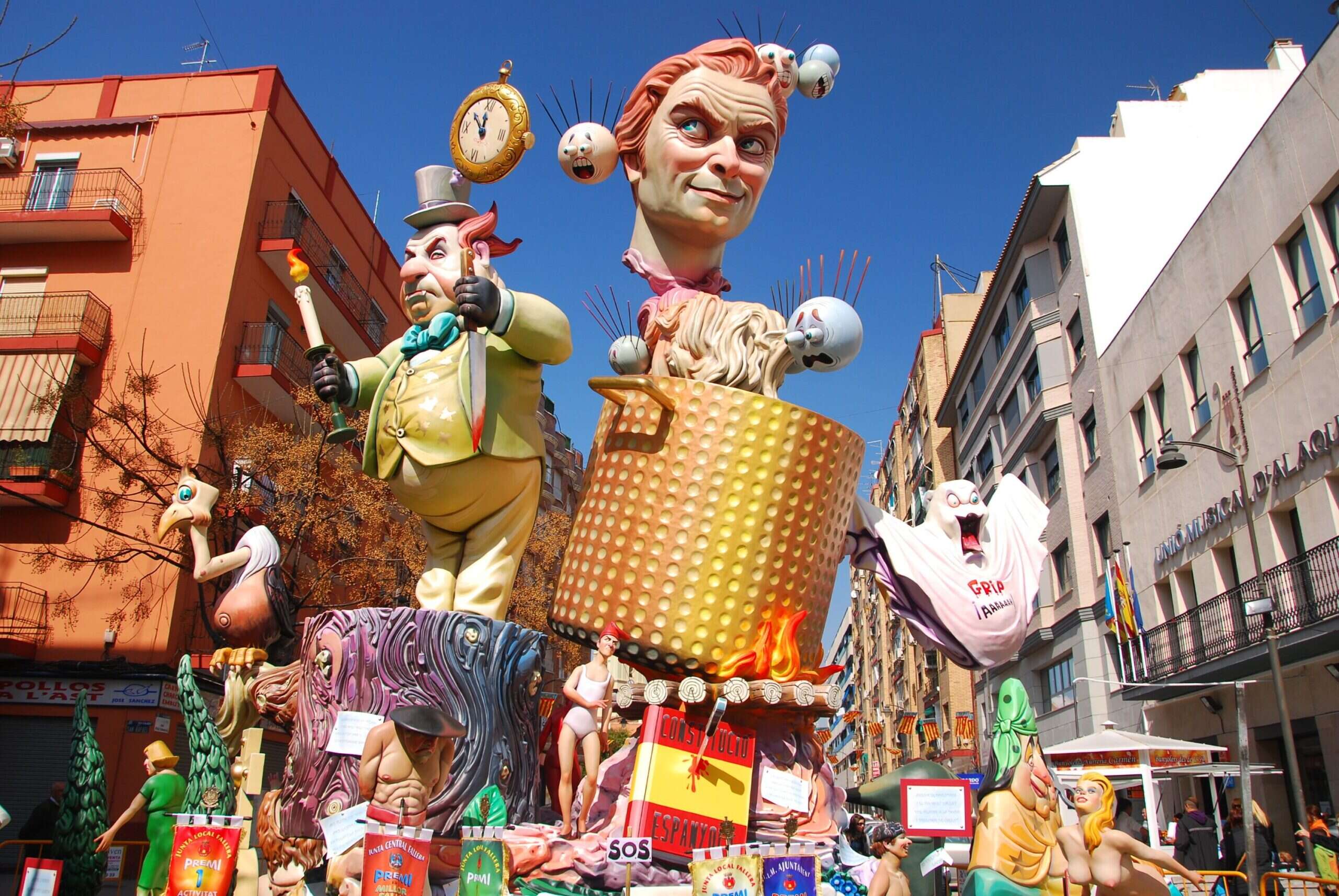
The story of las Fallas, a festival in Valencia that takes place in the days leading up to March 19, originates from a Middle Ages tradition of carpenters who would celebrate the arrival of spring by burning the pieces of wood that they used to prop up lights in their workshops during winter. Old belongings and rags were slowly introduced to the fire, making the wooden structure look not dissimilar to a human.
Today, Las Fallas is a pyrotechnic extravaganza in which these structures – now ninots, which means puppets – are raised, and on the last day burned, throughout the city. Often resembling celebrities and politicians, it is a great display of Spanish art and satire. And the locals get involved in the display too; expect to see historical costumes aplenty.
Never to miss an opportunity to party, its evolution over the centuries has seen it become a jubilant celebration, in which participants can look forward to days of music, food, and dancing, all emphasizing Spanish heritage and culture.
[See also: The Most Iconic Film Locations in Spain]
La Tomatina
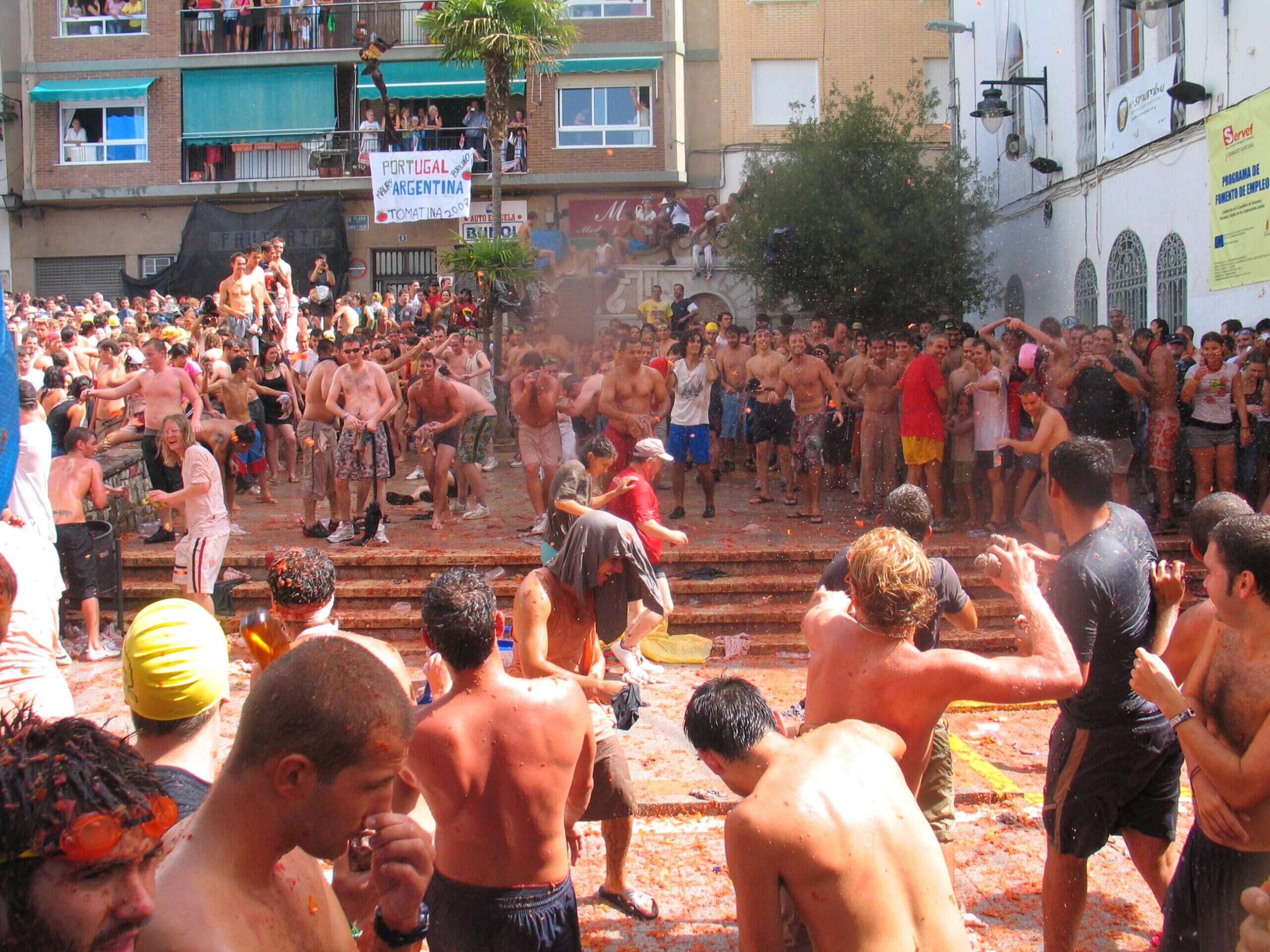
If you like your festivals of Spain including some form of gastronomy, but don’t fancy the pastry feeling of flour and egg, perhaps consider the salad effect with La Tomatina, which is quite literally a tomato fight. Taking place in the Valencian town of Buñol on the last Wednesday of August, revelers take to the streets to pelt and be pelted.
With more than 20,000 attendees every year, the festival started in 1945 with a group of young people joining a parade of musicians. This disruption caused one of the musicians to enter a fit of rage and an unfortunately located market stall fell victim to the fury, a colossal food fight ensued between the gatecrashers and the parades. The tomato fight has been held each year ever since.
Authorities attempted to ban the festival in the 1950s for a lack of piety; 1957 saw a protest tomato burial held, with even a funeral band employed. Today, the city council employs ten instructions for those that join in, with the last one rounding off with a commandment not too difficult to follow: have a great, fun time.
[See also: The Most Scenic Drives in Spain]
San Isidro

Slightly more on the religious side of the festivals of Spain – and a bit cleaner too – is San Isidro’s Feast Day on 15 May. The patron saint of Madrid is celebrated across the city for days, with both locals and tourists journeying to the Hermitage of San Isidro, a 12th century farmer, to spend the day feasting on regional dishes, particularly lamb mesentery and fried lamb intestines. Small and sugary circular breadsticks are also part of the deal, if the aforementioned delicacies don’t tickle your fancy.
Regional and traditional music plays throughout the day, and the party continues throughout the nights, with open-air concerts in parks that nod towards more modern and international music genres. Don’t go to bed too early; an impressive firework display launches from the Alfonso XII monument at midnight.
The day also marks the Spanish capital’s bullfighting season, which lends an element of the national spectacle to the festivities. Expect plenty of traditional dress too: this is a festival that encapsulates so many aspects of Spanish culture and heritage, with a notable emphasis on Madrid’s own regional flair, and is not to be missed if planning a trip to the city.








